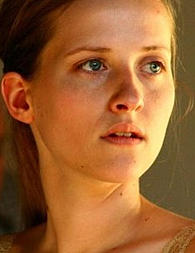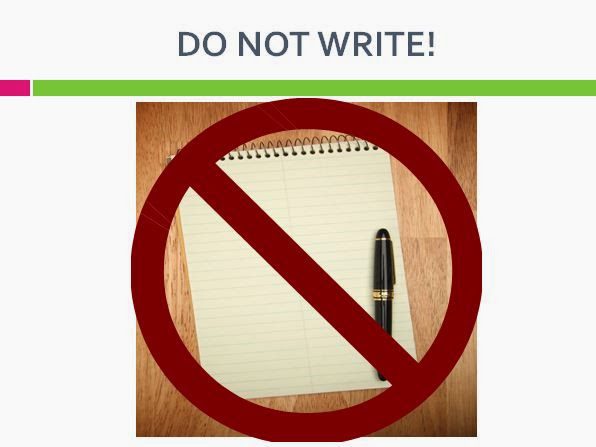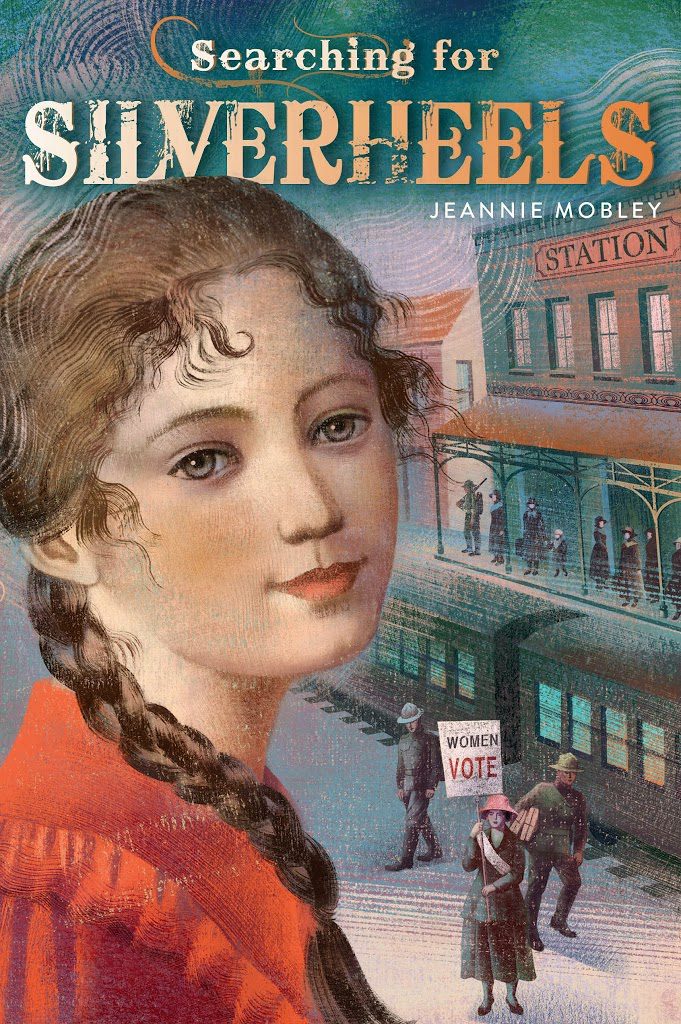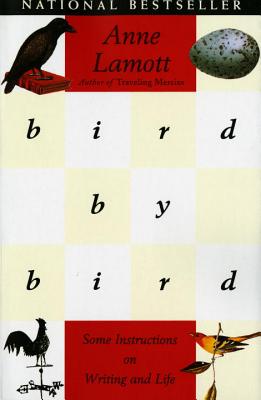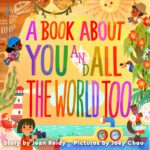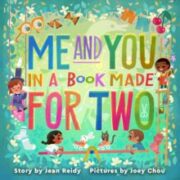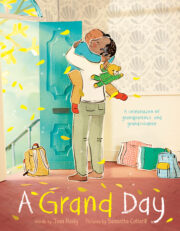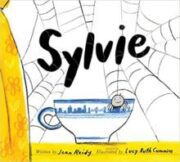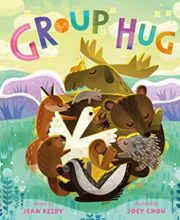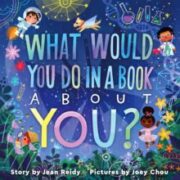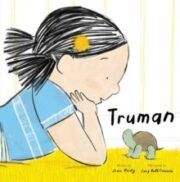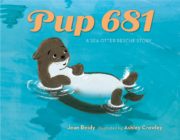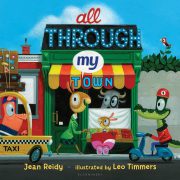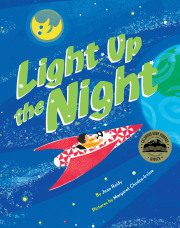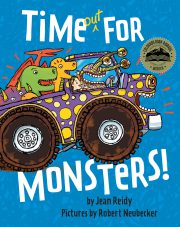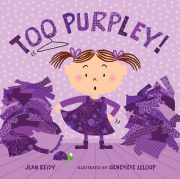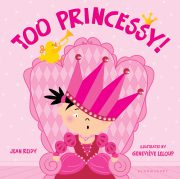Here’s a great way to connect children’s authors and readers, and it’s a WIN-WIN-WIN for schools, authors and school book fairs everywhere!

AUTHOR SPOTS FOR SCHOOLS!
Author Spots are FREE mini-commercials created by children’s authors which schools can broadcast to promote their book fair to kids and parents.
I’m not talking about anything fancy here – just a 30 second to 1 minute webcam, YouTube video of a children’s author giving a shout-out about his/her books along with a personalized promotion for a school book fair. It might be something as simple as:
“Hi, I’m Jean Reidy, children’s author! I’m super excited that TOO PURPLEY! is coming to the Abraham Lincoln Elementary book fair. Don’t forget to stop by and check out all the awesome books on sale. GO LIONS!”
Here are 2 sample Author Spots for you to view. See what I’m talking about?
Author Spots could be shown in morning video announcements, during library time, in the classrooms, at PTO meetings, at the school entrance, or loaded on the school’s website … the possibilities are endless.
It’s simple! Here’s how it works:
Teachers, Principals, and Book Fair Volunteers: Review the authors and their books listed below and decide who might be a good fit for your school book fair. Authors who have books specifically at Scholastic Book Fairs are noted with an “S” after their name. Their names link you to their website. Choose a few options because not every author will be available at all times. Then contact one or more — can you imagine a whole week of AuthorSpots? — of the authors below, requesting a FREE AuthorSpot. If the author agrees, tell the author how you’d like it personalized – school name, school mascot, etc. And when the video is posted, the author will send you the link. It’s as simple as that.
Children’s Authors and Illustrators:
If you’re interested in recording Author Spots for Schools, e-mail me your name, your 5 most recent book titles, genres and your website link and I’ll add you to the list. Send your information to reidy(dot)jean(at)gmail(dot)com. If you know that one or more of your books is offered specifically at Scholastic Book Fairs, please let me know, and I’ll put an “S” after your name. Then, when a school contacts you, record your Author Spot, upload it to YouTube and send the link to the school. If you’d like to participate but you’d prefer to record only one generic book fair promotion video that ANY school can use, let me know. I’ll start a separate list and link to your video. If we get enough authors participating, I’ll even host a website specifically for Author Spots.
The following authors are interested in promoting your book fair! And here is just a sampling of their books. Please check their website for contact and other information.
FICTION PICTURE BOOKS:
Jean Reidy (S) – TOO PURPLEY!, TOO PICKLEY!, TOO PRINCESSY, LIGHT UP THE NIGHT, TIME OUT FOR MONSTERS!, ALL THROUGH MY TOWN
Mirka Breen – THERE’S A TURKEY AT THE DOOR
Pam Calvert (S) – PRINCESS PEEPERS, PRINCESS PEEPERS PICKS A PET
Jenny Goebel (S) – FOREMAN FARLEY HAS A BACKHOE
Jean Gralley – HOGULA, DREAD PIG OF NIGHT, VERY BORING ALLIGATOR, YONDERFEL’S CASTLE, THE MOON CAME DOWN ON MILK STREET
Tara Lazar – THE MONSTORE, I THOUGHT THIS WAS A BEAR BOOK, LITTLE RED GLIDING HOOD
Ammi-Joan Paquette (S) – GHOST IN THE HOUSE
Tammi Sauer (S) – MR. DUCK MEANS BUSINESS, ME WANT PET!, BAWK & ROLL, OH, NUTS!, PRINCESS IN TRAINING
Brianna Caplan Sayres – WHERE DO DIGGERS SLEEP AT NIGHT?, TIARA SAURUS REX
Liz Garton Scanlon (S) – ALL THE WORLD, THINK BIG, A SOCK IS A POCKET FOR YOUR TOES, NOODLE & LOU, HAPPY, BIRTHDAY BUNNY!
Judith Snyder – WHAT DO YOU SEE?, STINKY FEET
Deborah Underwood – THE QUIET BOOK, THE LOUD BOOK, A BALLOON FOR ISABEL, PIRATE MOM
Audrey Vernick (S) – SO YOU WANT TO BE A ROCK STAR, IS YOUR BUFFALO READY FOR KINDERGARTEN?, TEACH YOUR BUFFALO TO PLAY DRUMS
NONFICTION PICTURE BOOKS:
Pam Calvert (S) – MULTIPLYING MENANCE: THE REVENGE OF RUMPELSTILTSKIN
Alison Ashley Formento (S) – THIS TREE COUNTS, THIS TREE 1-2-3, THESE BEES COUNT, THESE SEAS COUNT
Audrey Vernick (S) – SHE LOVED BASEBALL, BROTHERS AT BAT
MIDDLE GRADE FICTION:
Ruth McNally Barshaw (S) – THE ELLIE MCDOODLE SERIES
Mary Bartek – FUNERALS AND FLY FISHING
Hélène Boudreau (S)- REAL MERMAIDS DON’T WEAR TOE RINGS, REAL MERMAIDS DON’T HOLD THEIR BREATH, REAL MERMAIDS DON’T NEED HIGH HEELS (SPRING 2013), REAL MERMAIDS DON’T SELL SEA SHELLS (FALL 2013)
Mirka Breen –THE VOICE OF THUNDER
Jenny Goebel (S) – GRAVE IMAGES
Danette Haworth (S) – VIOLET RAINES ALMOST GOT STRUCK BY LIGHTNING, THE SUMMER OF MOONLIGHT SECRETS, ME & JACK, A WHOLE LOT OF LUCKY
Lynda Mullaly Hunt – ONE FOR THE MURPHYS
Natalie Lorenzi – FLYING THE DRAGON
Michaela Maccoll (S) – PROMISE THE NIGHT
Jennifer Nielsen (S) – THE FALSE PRINCE, THE RUNAWAY KING, MARK OF THE THIEF, BEHIND ENEMY LINES, THE SHADOW THRONE
Audrey Vernick (S) – WATER BALLOON
Danette Vigilante – THE TROUBLE WITH HALF A MOON
Diane Zahler – THE THIRTEENTH PRINCESS, A TRUE PRINCESS, PRINCESS OF THE WILD SWANS
MIDDLE GRADE NONFICTION
Cynthia Levinson – WE’VE GOT A JOB
Sarah Albee (S) – POOP HAPPENED! A HISTORY OF THE WORLD FROM THE BOTTOM UP
YOUNG ADULT
Penny Blubaugh – BLOOD AND FLOWERS, SERENDIPITY MARKET
J. Anderson Coats – THE WICKED AND THE JUST
Michaela Maccoll (S) – PRISONERS IN THE PALACE
Ammi-Joan Paquette (S) – PARADOX
Peter Salomon – HENRY FRANKS
Jeanne Ryan – NERVE, CHARISMA
Lisa Colozza Cocca – PROVIDENCE
And if an Author Spot is not enough … So many authors, including me (see my Time Out for Teachers page), do free 15-30 minute virtual visits with schools. And that’s FANTASTIC! You can find that list right here on Kate Messner’s blog or check out Skype in the Classroom and the Skype an Author Network.
Wishing you a VERY successful book fair!
Jean





